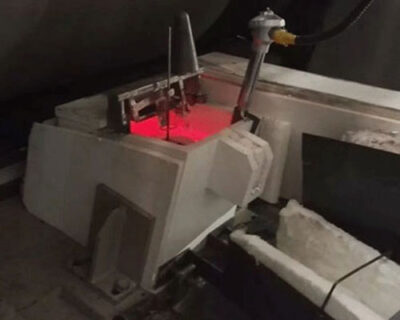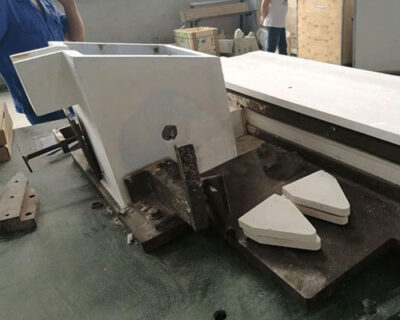The static vertical slab is often used for vertical slabs of horizontal casting rolling. It is an important step for aluminum foil casting and rolling.
Static Vertical Slab Process
Before discharging, the staff on the exit side of the rolling mill placed a small piece of fiber felt on the front ends of the two ears and sealed them, put on the lead plate, and prepared the dry fiber felt to block when the aluminum has slightly flowed during the vertical plate process.
Check whether the discharge ports that need to be blocked in advance are blocked tightly.
Detect the temperature of aluminum water in the standing furnace and degassing unit. After the molten aluminum temperature meets the requirements of the vertical plate, the flow eye is opened, and the personnel on the inlet side pay attention to the liquid flow control of the front box liquid level control system and detect the melt temperature of the front box launder. When the temperature reaches the requirement, it starts to supply flow to the front box.
When the molten aluminum flows over the upper edge of the front box opening and begins to enter the mouth cavity, the main operator starts the rolling mill to make the rolls rotate at a low speed, and pay attention to the changes in the current of the main machine and the temperature of the front box.

The lead plate is ejected, and the personnel on the exit side must remove the lead plate in time.
The main operator slowly increases the speed, and pays attention to the change of the host current. After a week, the cooling water is slowly introduced.
Shear the board head and guide the board to the coiler for coiling.
Start the aluminum-titanium wire feeding device and put in the aluminum-titanium wire. First vent the graphite rotor and then slowly put it into the aluminum liquid to make it normal online degassing.
Adjust the front box temperature, casting and rolling speed, check the plate shape, plate thickness, and crystal grain, and adjust until the finished product is normal.

